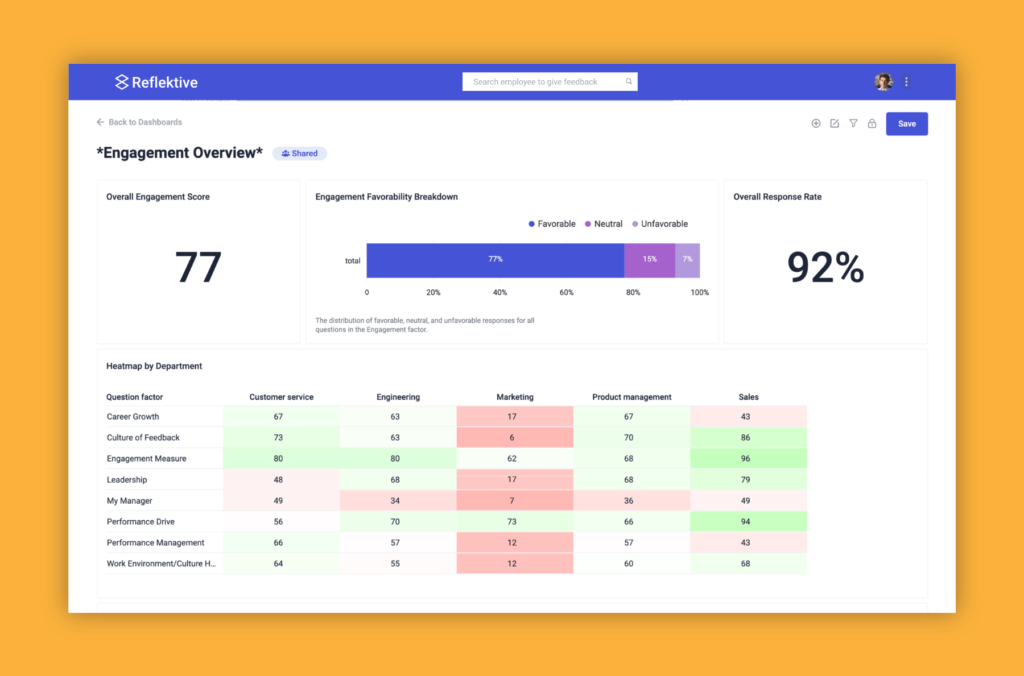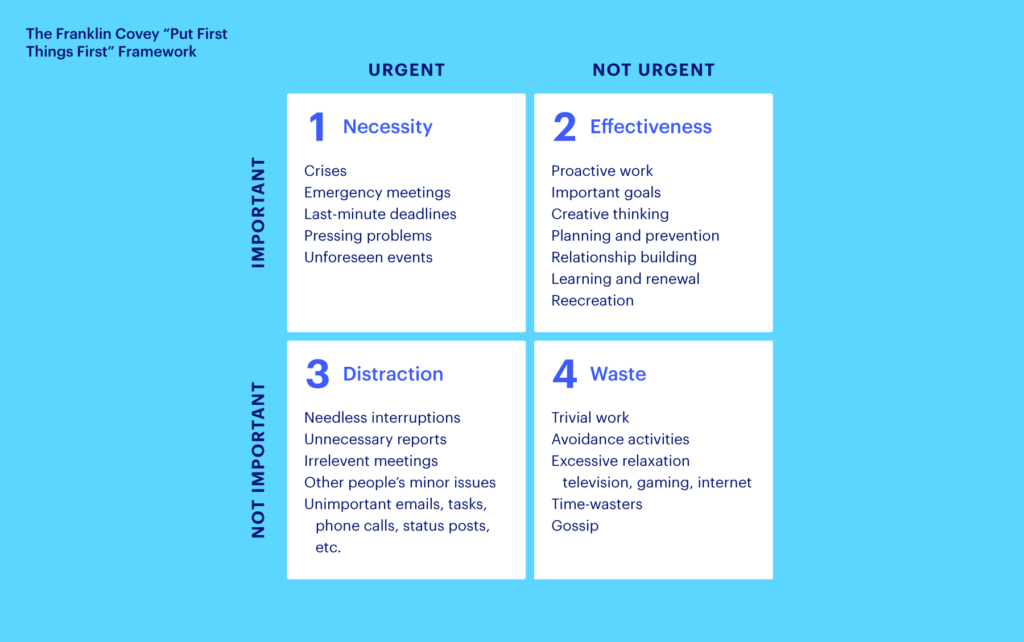In the past few months, companies around the world have changed how they go to market, structure their headcount, and plan for future investments. While every business is in a different stage of this journey, there is one common reality: prioritization is key.
To help HR teams allocate their time in a way that adds the most value, Reflektive has developed the below step-by-step guidance. With the right strategy, frameworks, and data, HR teams can better focus on their high-priority work and act as a strategic partner to leadership.
Step 1: Align With Business Goals
It can be overwhelming to know where to start as you plan key initiatives for the rest of the year. To develop your strategic recommendations, we recommend first aligning with key business goals. Identify what goals have changed, and what the new priorities are for the next few quarters. This context is crucial as you plan key focus areas for your HR team.
Step 2: Understand Employee Needs
In addition to knowing the company’s business goals, it’s also important to identify the highest-priority employee needs to better prioritize. By understanding what is most top-of-mind for employees, we can develop the right programs to keep our workforce happy and engaged. At Reflektive, we always get started on building or improving our HR programs with hypotheses. For one of our key initiatives – supporting employees while they work remotely, I used our new Coronavirus Sentiment Survey to gather feedback from employees on how we could best support them. After closing out the survey, I spent quality time analyzing the data in Reflektive’s People Intelligence solution. I looked at:
- Overall favorability
- Survey response rate
- Favorability by question
- Heatmap by department
- Heatmap by gender
- Comment data, including themes

After evaluating this data, I learned three important things about how Reflektors are feeling now:
- Employees feel supported, and Reflektive’s responses have provided peace of mind
- Employees feel connected, but would like more facetime with leadership and their peers
- Employees seek a better work from home set-up
Step 3: Focus on the Highest-Impact Activities
With these insights, there were myriad activities and programs I could build to address the aforementioned employee needs. To make the best usage of my time, I used the Franklin Covey “Put First Things First” framework to help me better prioritize my work:

Franklin Covey’s framework helps me think through the work activities that are important, versus those that are simply urgent. My team and I manage many urgent matters each day, such as employment verifications, HRIS updates, onboarding and offboarding procedures, payroll changes, compliance reporting… and the list goes on. If we focused on addressing only these issues, we wouldn’t have time to think strategically and plan as a team.
At Reflektive, we aim to focus on the upper right quadrant of this Franklin Covey framework. For the Coronavirus Sentiment Survey, we sat down as a team and evaluated the aforementioned data. We realized that employees connectedness and work from home support were the key themes that populated in our results. So we did some creative thinking, as well as a planning session, to develop the right programs to address these employee needs.
Ultimately, we rolled out the following programs, activities, and resources to our employees:
To Drive Connectedness
- Weekly CEO Fireside Chat
- Regular team meetings
- Social Hours
- Social Calendar
- HR team check-ins
- Calm and Headspace
To Better Support Employees While They Work Remotely
- Google Drive Folder of Resources
- Manager & Employee Guides
- Working Parent Guide
- Evaluating WFH supply needs of each team
- Ergonomic tips
We received positive feedback from employees about these programs, and are happy that we planned strategically rather than jumping into immediate solutioning, or getting distracted by all of the other data we gathered.
However, my team and I do still need to check in with ourselves on a daily basis. Even with our prioritization framework and strategic planning, those urgent emails and Slack messages still pop up. Our daily reminders to focus on what is truly important help us stay on track, even during our busiest times.
Step 4: Plan for the Future
Finally, my team is paying special attention to legal developments, state-wide announcements, and industry news to plan for the future. Below are the key initiatives we’re working on now to support our employees in the future:
- Additional resources for employees as they work remotely: We’re specifically focused on activities and programs that drive employee connection during this time. At Reflektive, we use our new 1:1 Conversation Starters so managers can better understand and support employee needs.
- Planning for the removal of shelter-in-place orders: The team is thinking about what the return to our office should look like, and how to keep employees safe and comfortable when it happens.
- Addressing mental health needs: With no clear end date to the pandemic, there are worrying trends on its impact to employees’ mental health and well-being. We’re evaluating resources and programs to support employees who are experiencing issues.
While the pandemic has altered so many aspects of everyday life, now is the time that HR teams can come together and build impactful programs for their workforce. I’ve seen some silver linings within our industry, specifically as HR professionals build more empathy and work better as teams.
If you want to learn more about how Reflektive and our customers are prioritizing during these uncertain times, contact us.
